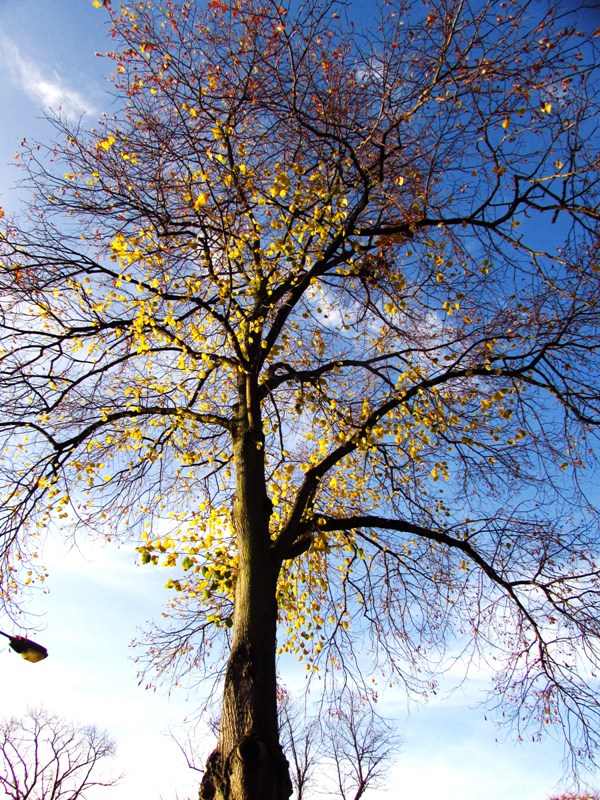
Large Lime along busy road in Walsall (picture by M. Summers) 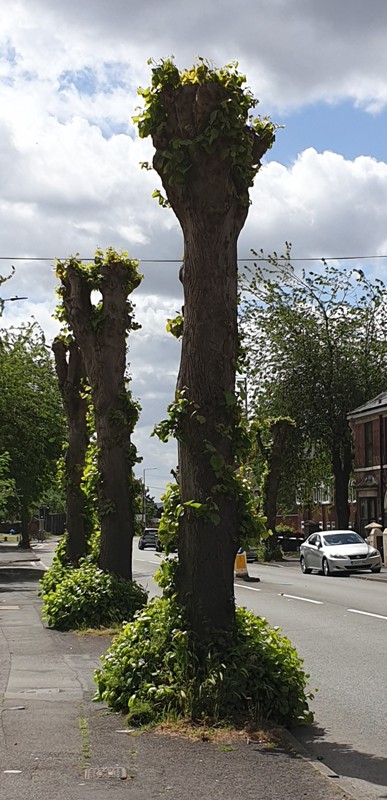
Pollarded Lime In Dudley (picture by M. Poulton)
The Lime trees are recognisable large trees often planted along roads and in parks. They often get pruned very hard, a process called: pollarding, which may happen in restricted areas such as shown in the picture above. Fortunately the trees in Walsall are not pruned so are extremely scented when in flower and very useful for honeybees!
They have heart-shaped leaves, fragrant flowers in summer and later the round, pea-size fruit are attached to the persistent papery leaf called a bracteole which ‘sails’ down to the ground eventually and possibly form a new tree if it finds some suitable soil!
All known uses are listed below with blue background for interesting facts and Wildlife Uses, pink for Medicinal Uses or danger and green for all Other Uses! Information found on various websites as well as books for which links are provided. a very useful website is ‘A Modern Herbal’ by Mrs. M. Grieve, which has a lot of concise information on Lime.
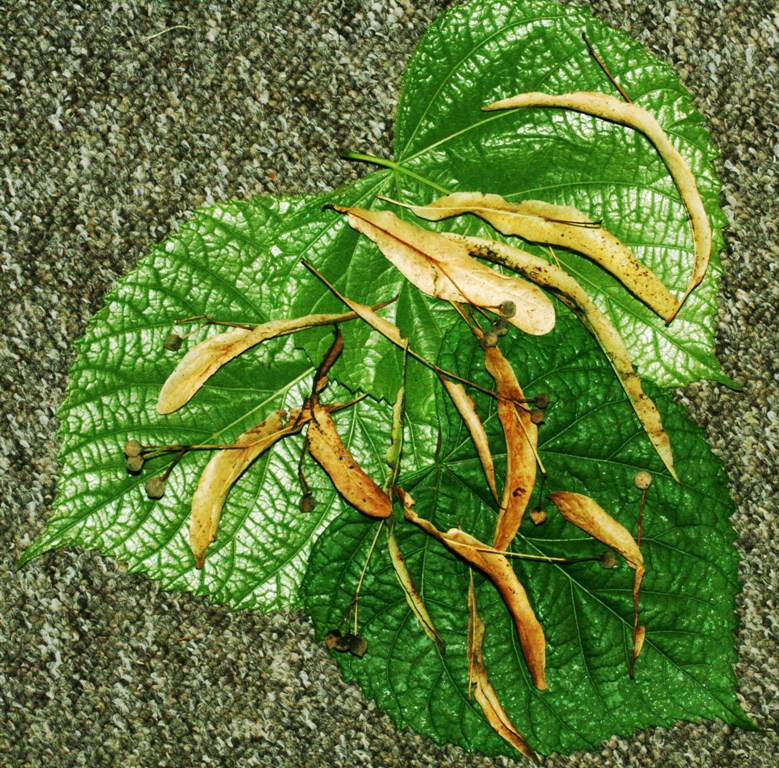
There are 3 known native species and the cross we mostly see is the Common Lime or Tilia x europaea .
Tilia x europaea
This is a cross between the Large-leaved Lime and the Small-leaved Lime and rare to find in some native woods as it is only partly fertile, but it is the commonest planted in parks, avenues and roads. Walsall seems to have many and the scent is heavenly when it is in flower! It is recognisable also on the amount of epicormic or suckering growth at the base of the tree. The leaves on this growth are a lot larger and thinner than the main leaves.
Wildlife uses:
- Lime leaves are eaten by the caterpillars of many moth species, including the lime hawk, peppered, vapourer, triangle and scarce hook-tip moths.
- They are very attractive to aphids, providing a source of food for their predators, including hoverflies, ladybirds and many species of bird.
- Bees also drink the aphid honeydew deposited on the leaves.
- The flowers provide nectar and pollen for insects, particularly bees.
- Long-lived trees provide dead wood for wood-boring beetles, and nesting holes for birds.
Edible uses:
Young leaves or leaves from suckers – raw:
- Excellent in salads, they are mild and mucilaginous.
Flowers:
- A refreshing tea is made from the dried flowers
If the flowers are too old they may produce symptoms of narcotic intoxication!
- Flowers are used as a vegetable
Tree sap:
- used as a drink or concentrated to make a syrup and used as a sweetener.
Medicinal Uses:
See below with the next species
Other Uses:
- Lime wood is soft and light, white-yellow and finely textured. It is easy to work and often used in wood turning, carving and furniture making.
- A special mention goes to the making of Love Spoons of limewood, which is a Welsh tradition.
- Lime bark was traditionally used to make rope.
- The wood does not warp and is still used today to make sounding boards and piano keys.
- Limes can be coppiced and used for fuel, hop-poles, bean sticks, cups, ladles, bowls and even Morris-dancing sticks.
- Lime flowers are a valuable source of food for honey bees.
- The most common use of common lime is as an ornamental tree.
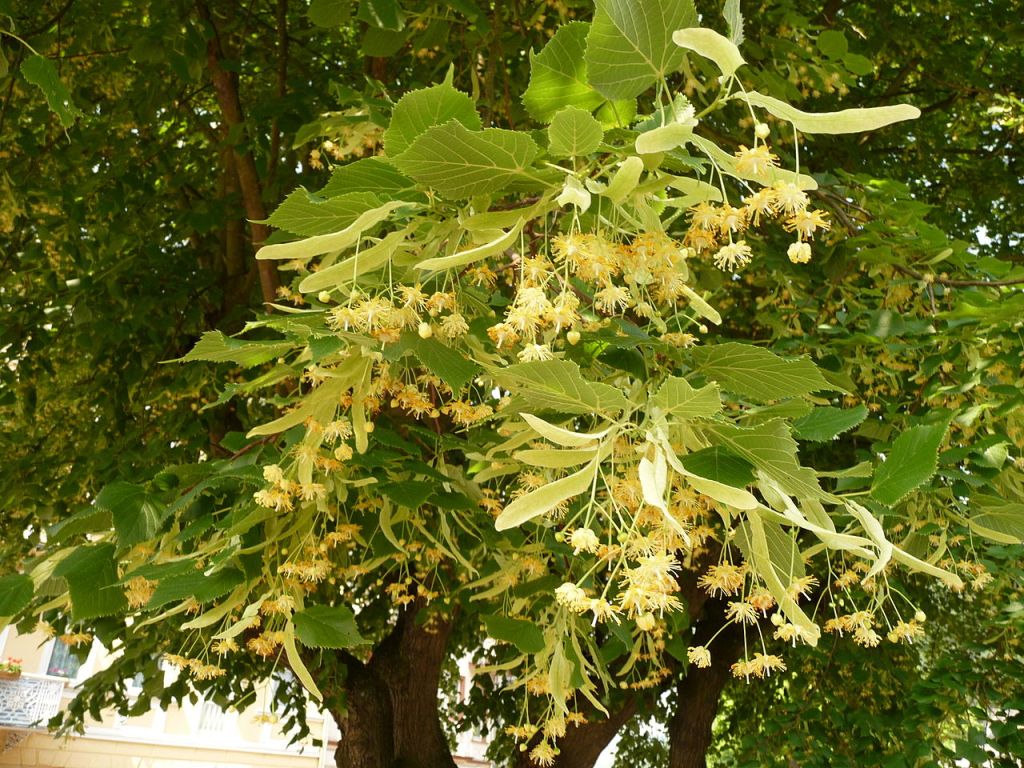
Tilia platyphyllos
Tilia platyphyllos or Large-leaved Lime
This is one of the parents of the above described Common Lime
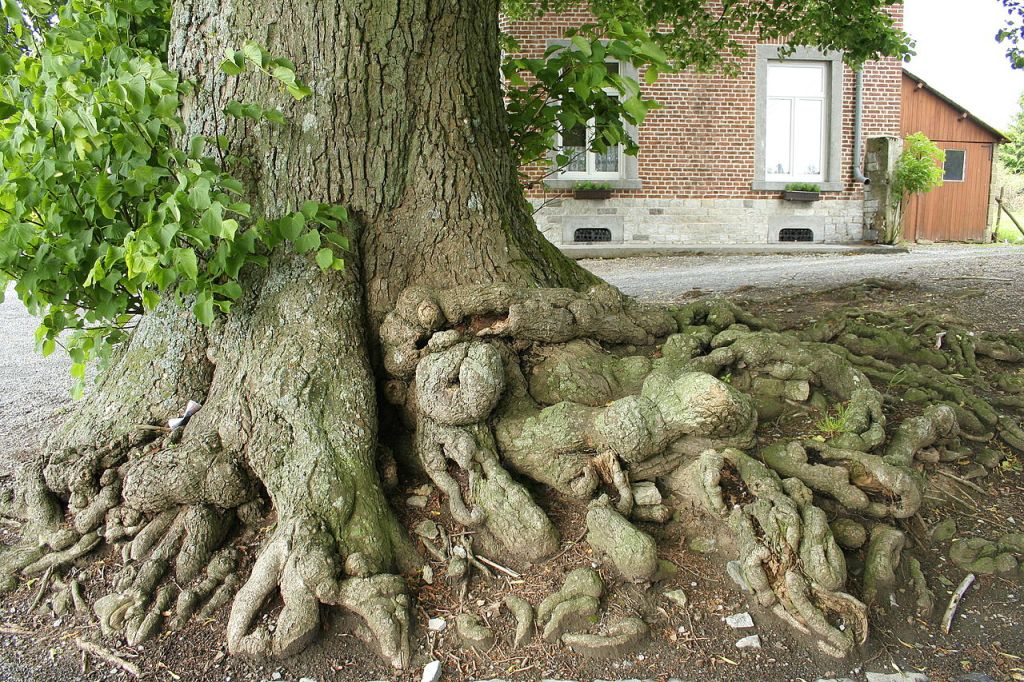
It has none or much less base or suckering growth than the Common Lime.
Mostly the same uses as above but I found some others in Wikipedia:
- for carving,
- for fodder, ropes or firewood. Bast and honey, which were historically the main products of Tilia, may have been an important factor in the spread of the species and its status as a typical agroforestry tree in the Middle Ages.
Sap was made into wine
Tilia spp. are also important for amenity use,
- shelterbelts and game plantings in the open landscape,
- in urban areas and recreational forestry.
Medicinal Use: (From Medicinal Flora by Julian Barker)
The inflorescence (including the bracts) are used fresh or dried and harvested early in flowering.
- Nervous tension and resulting headaches and insomnia.
- Hypertension and arteriosclerosis (combines here well with Hawthorn)
- Common cold with fever (combine with elder)
- Poor peripheral circulation
The bark is used in anti-inflammatory poultices
Other Medicinal uses (by PFAF):
The flowers are harvested commercially and often sold in health shops etc.
- A charcoal made from the wood is used in the treatment of gastric or dyspeptic disturbances and is also made into a powder then applied to burns or sore places.
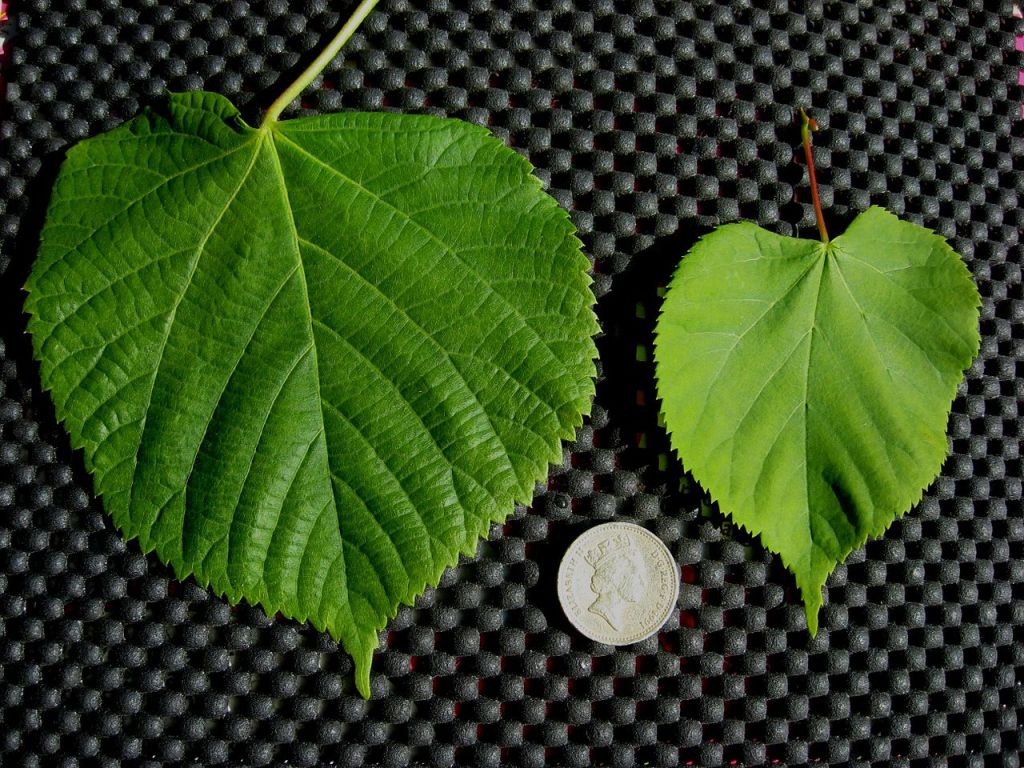
Tilia cordata
Tilia cordata or Small-leaved Lime; the other parent of our Common Lime is probably the most common native lime and has the same uses as the other 2 species above.
In Britain T. cordata, is considered an indicator of ancient woodland, and is becoming increasingly rare. Owing to its rarity, a number of woods have been given SSSI status. Cocklode Wood, part of the Bardney Limewoods, is the best surviving spread of medieval small leaved limes in England. Another site is Shrawley Wood in Worcestershire.Small-leaved lime was once regarded as holy and good for carving.
Modern mature woodland trees were estimated to have germinated between 1150 and 1300 AD, making them around 800 years old. Precise age determination is impossible as heartwood at the centre disintegrates and therefore rings cannot be counted, and other methods are used.
Uses:
Ornamental:
Wikipedia mentions 4 cultivars including:
- ‘Winter Orange’ – rich red-orange-brown stems with reddish buds, can be cut back to grow long shoot extensions. It has gained the Royal Horticultural Society’s Award of Garden Merit.
Wood: The white, finely-grained wood is not a structurally strong material but a classic choice for refined woodcarvings. It was the prime choice for the carvings in St. Paul’s Cathedral, Windsor Castle, and Chatsworth. It is also commonly used for lightweight projects such as carved spoons, light furniture, bee hives and honeycomb frames.
Honey: A monofloral honey is produced by bees using the trees and is widely used all over Europe. “Linden honey” is said to be nutritious and to have medicinal qualities.
Medicinal: A charcoal made from the wood is used in the treatment of gastric or dyspeptic disturbances and is also made into a powder then applied to burns or sore places.
- A fibre from the inner bark is used to make mats, shoes, baskets, ropes etc.
- It is also suitable for cloth (harvested from trunks that are 15 – 30cm in diameter)
- The fibre can also be used for making paper. The stems are harvested in spring or summer, the leaves are removed and the stems steamed until the fibres can be stripped. The outer bark is removed from the inner bark by peeling or scraping. The fibres are cooked for 2 hours with lye and then beaten in a ball mill. The paper is beige in colour.
- A charcoal made from the wood is used for drawing.
